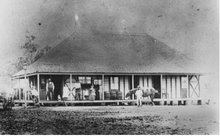Searching the web to find information about migrants leaving Germany through Hamburg, I found out that on July 4 this year a museum will be opening there, the BallinStadt Emigration Museum (or the more romantic German version “Auswandererwelt”). Between 1850 and 1939 some five million Germans passed through Hamburg on their way to the rest of the world. Most went to the United States. Some came to Australia. A press release from the museum estimates that 20 million Americans and half of all American Jews can trace their ancestry to migrants who passed through Hamburg
The museum is partially sponsored by Hapag-Lloyd, a company created in 1970 from a merger of Hamburg-Amerikanische Packetfahrt-Actien-Gesellschaft (Hamburg-America Line or Hapag) and Norddeutscher Lloyd (NDL), based in Bremen. You will remember that NDL ran migrant ships from Bremen to Australia. Both companies made their money originally from converting ships to carry migrants. Hapag, in particular was involved to the extent of building dormitories for the migrants on the docks in Hamburg. These dormitories were completed in 1901 so the Jaeckels would not have stayed in one. However, it illustrates how migration was big business at the turn of the twentieth century.
In 1892 a cholera outbreak led to the closing of the Hamburg and Prussian borders. The flow of migrants virtually stopped until Hapag and NDL guaranteed to cover the cost of examining and disinfecting migrants wishing to cross the borders. By this time, only migrants carrying tickets from these two shipping companies were allowed through the borders. Thus, a lucrative business continued.
The BallinStadt museum will contain a sculpture entitled “Wings of Hope” on which descendents of migrants can arrange to have their ancestors’ names placed on a plaque (similar to Freemantle Harbour Maritime Museum’s Migrants Wall in West Australia). I like how the sculptor expresses his hope that the “experience of walking in a claustrophobic spiral and exiting as the spiral opens out to the west will capture the "ambivalent situation" of the emigrants -- "their hope, but also fear and despair."
Subscribe to:
Post Comments (Atom)

No comments:
Post a Comment